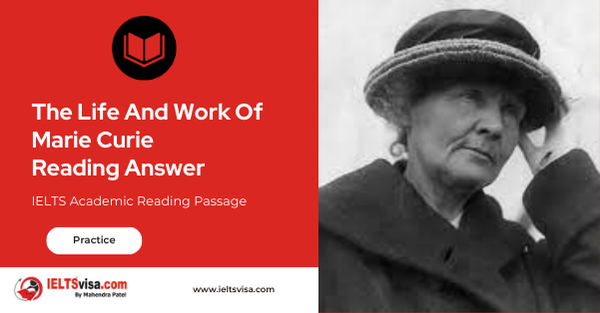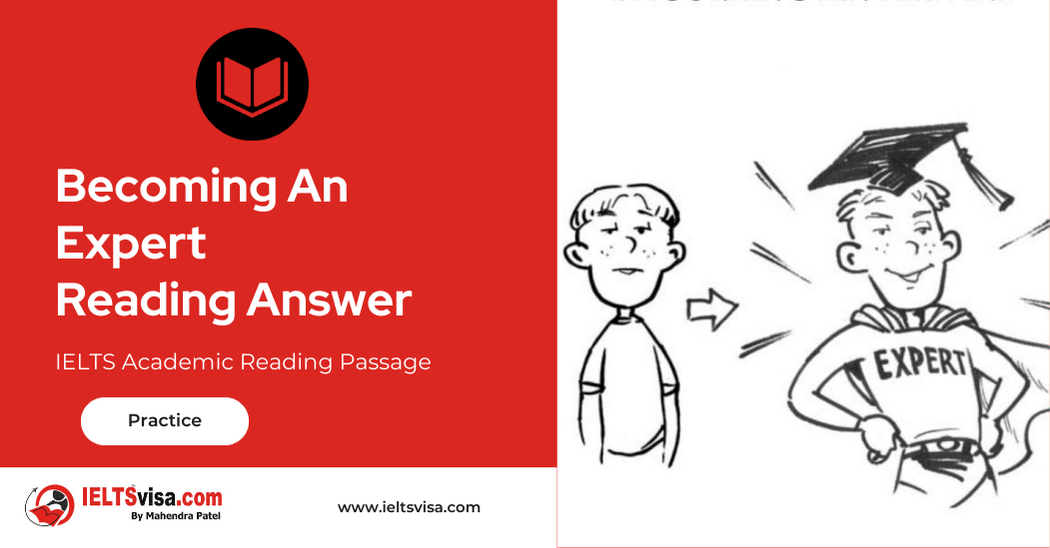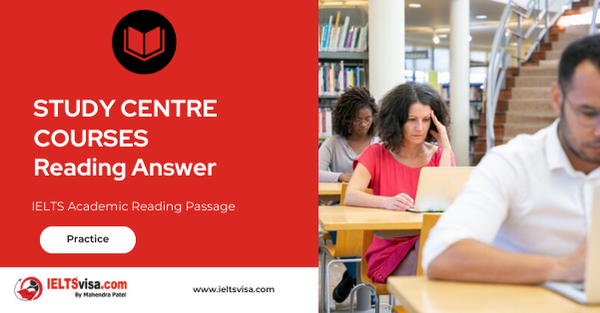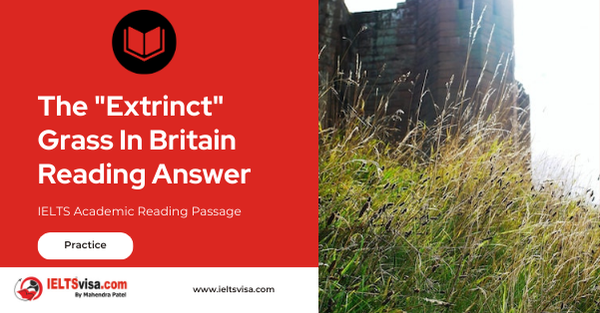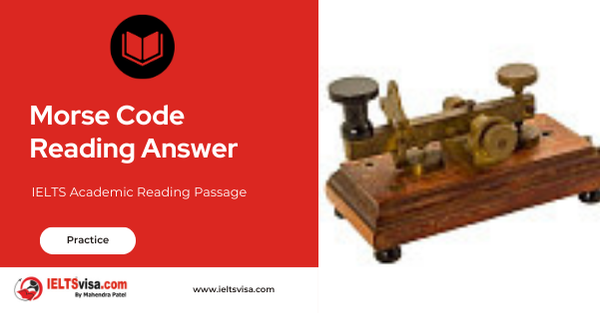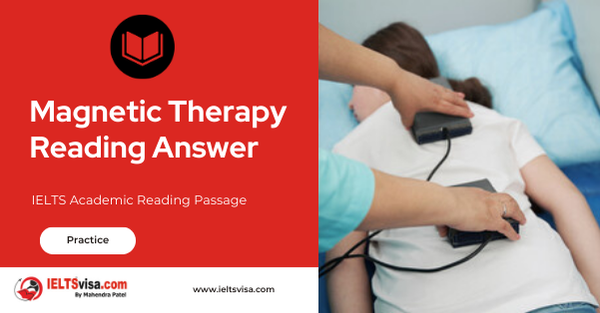Do Literate Women Make Better Mothers? Reading Answer
IELTS Academic Reading Passage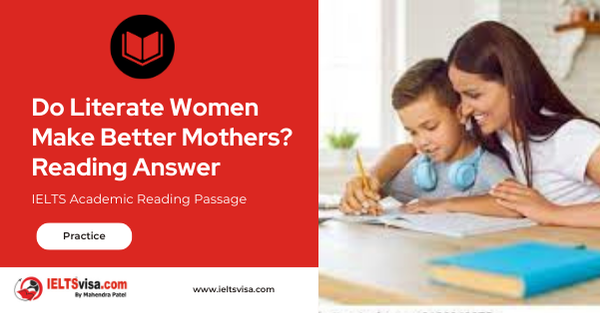

Children in developing countries are healthier and more likely to survive past the age of five when their mothers can read and write. Experts In public health accepted this idea decades ago, but until now no one has been able to show that a woman’s ability to read in Itself Improves her children’s chances of survival.
Most literate women learnt to read In primary school, and the fact that a woman has had an education may simply indicate her family’s wealth or that It values Its children more highly. Now a long-term study carried out In Nicaragua has eliminated these factors by showing that teaching reading to poor adult women, who would otherwise have remained Illiterate, has a direct effect on their children’s health and survival.
In 1979, the government of Nicaragua established a number of social programmes, including a National Literacy Crusade. By 1985, about 300,000 Illiterate adults from all over the country, many of whom had never attended primary school, had learnt how to read, write and use numbers.
During this period, researchers from the Liverpool School of Tropical Medicine, the Central American Institute of Health In Nicaragua, the National Autonomous University of Nicaragua and the Costa Rican Institute of Health Interviewed nearly 3,000 women, some of whom had learnt to read as children, some during the literacy crusade and some who had never learnt at all. The women were asked how many children they had given birth to and how many of them had died In Infancy. The research teams also examined the surviving children to find out how well-nourished they were.
The Investigators’ findings were striking. In the late 1970s, the infant mortality rate for the children of Illiterate mothers was around 110 deaths per thousand live births. At this point In their lives, those mothers who later went on to learn to read had a similar level Of child mortality (105/1000). For women educated in primary school, however, the Infant mortality rate was significantly lower, at 80 per thousand.
In 1985, after the National Literacy Crusade had ended, the infant mortality figures for those who remained illiterate and for those educated In primary school remained more or less unchanged. For those women who learnt to read through the campaign, the infant mortality rate was 84 per thousand, an impressive 21 points lower than for those women who were still Illiterate. The children of the newly-literate mothers were also better nourished than those of women who could not read.
Why are the children of literate mothers better off? According to Peter Sandiford of the Liverpool School of Tropical Medicine, no one Knows for certain. Child health was not on the curriculum during the women’s lessons, so fie and his colleagues are looking at other factors. They are working with the same group of 3,000 women, to try to find out whether reading mothers make better use of hospitals and clinics, opt for smaller families, exert more control at home, learn modern childcare techniques more quickly, or whether they merely have more respect for themselves and their children.
The Nicaraguan study may have important implications for governments and aid agencies that need to know where to direct their resources. Sandiford says that there is increasing evidence that female education, at any age, is “an important health intervention in its own right’. The results of the study lend support to the World Bank’s recommendation that education budgets in developing countries should be increased, not just to help their economies, but also to improve child health.
‘We’ve known for a long time that maternal education is important,’ says John Cleland of the London School of Hygiene and Tropical Medicine. ‘But we thought that even if we started educating girls today, we’d have to wait a generation for the pay off. The Nicaraguan study suggests we may be able to bypass that.’
Cleland warns that the Nicaraguan crusade was special in many ways, and similar campaigns elsewhere might not work as well. It is notoriously difficult to teach adults skills that do not have an immediate impact on their everyday lives, and many literacy campaigns in other countries have been much less successful. ‘The crusade was part of a larger effort to bring a better life to the people,’ says Cleland. Replicating these conditions in other countries will be a major challenge for development workers.
Questions 1-5
Complete the summary using the list of words, A-J, below.
Write the correct letter, A-J, in boxes 1-5 on your answer sheet.
NB You may use any letter more than once.
1. The Nicaraguan National Literacy Crusade aimed to teach large numbers of illiterate 1 to read and write.
2. Public health experts have known for many years that there is a connection between child health and 2
3. However, it has not previously been known whether these two factors were directly linked or not. This question has been investigated by 3 in Nicaragua.
4. As a result, factors such as 4 and attitudes to children have been eliminated, and it has been shown that 5 can in itself improve infant health and survival.
| A | child literacy | B men and women | C an international research team |
| D | medical care | E mortality | F maternal literacy |
| G | adults and children | H paternal literacy | I a National Literacy Crusade |
| J | family wealth |
Questions 6-11
Do the following statements agree with the claims of the writer in Reading Passage 2? In boxes 6-11 on your answer sheet, write .
YES if the statement agrees with the claims of the writer
NO if the statement contradicts the claims of the writer
NOT GIVEN if it is impossible to say what the writer thinks about this
6 About a thousand of the women interviewed by the researchers had learnt to read when they were children.
7 Before the National Literacy Crusade, illiterate women had approximately the same levels of infant mortality as those who had learnt to read in primary school.
8 Before and after the National Literacy Crusade, the child mortality rate for the illiterate women stayed at about 110 deaths for each thousand live births.
9 The women who had learnt to read through the National Literacy Crusade showed the greatest change in infant mortality levels.
10 The women who had learnt to read through the National Literacy Crusade had the lowest rates of child mortality.
11 After the National Literacy Crusade, the children of the women who remained illiterate were found to be severely malnourished.
Questions 12-13
Choose TWO letters, A-E.
Write the correct letters in boxes 12 and 13 on your answer sheet.
Which TWO important implications drawn from the Nicaraguan study are mentioned by the writer of the passage?
A It is better to educate mature women than young girls.
B Similar campaigns in other countries would be equally successful.
C The effects of maternal literacy programmes can be seen very quickly.
D Improving child health can quickly affect a country’s economy.
E Money spent on female education will improve child health.

Solution For: Do Literate Women Make Better Mothers? Reading Answer
| 1. B | 8. YES |
| 2. F | 9. YES |
| 3. C | 10. NO |
| 4. J | 11. NOT GIVEN |
| 5. F | 12. C, E IN EITHER ORDER |
| 6. NOT GIVEN | 13. C, E IN EITHER ORDER |
| 7. NO |
Review and Practice
- Regularly practice with IELTS reading samples and time yourself to get used to the pressure of the exam.
- Review your mistakes to understand where you went wrong and how to avoid similar errors in the future.
Our Books
Master IELTS Speaking Part 1
IELTS Writing Task 1 Book
IELTS Writing Task 2 Book
Do Literate Women Make Better Mothers? Reading Answer Explanation
Comin Soon
Practice IELTS Other Modules
IELTS Listening
The IELTS Listening test assesses how well you can understand spoken English in various contexts. It lasts about 30 minutes and is divided into four sections with a total of 40 questions. The listening tasks become increasingly difficult as the test progresses.
IELTS Academic Reading
The IELTS Academic Reading section assesses your ability to understand and interpret a variety of texts in academic settings. It is designed to evaluate a range of reading skills, including skimming for gist, reading for main ideas, reading for detail, understanding inferences, and recognizing a writer's opinions and arguments.
IELTS Speaking
The IELTS Speaking test assesses your ability to communicate in English on everyday topics. It lasts 11-14 minutes and consists of three parts: introduction, cue card, and a discussion based on the cue card topic.
IELTS General Reading
IELTS General Reading tests your ability to understand and interpret various types of texts. Here are some key areas and types of content you can expect to encounter in the reading section, along with tips for effective preparation.
IELTS Academic Writing Task 1
In IELTS Academic Writing Task 1, you are presented with a visual representation of information, such as graphs, charts, tables, or diagrams, and you are required to summarize, compare, or explain the data in your own words.
IELTS General Writing Task 1
In IELTS General Writing Task 1, you are required to write a letter based on a given situation. The letter can be formal, semi-formal, or informal, depending on the prompt. Here’s a breakdown of the key components to include in your letter
IELTS Academic Writing Task 2
In IELTS Academic Writing Task 2, you are required to write an essay in response to a question or topic. Here’s a guide to help you understand the essential elements of this task
IELTS Exam Tips
To succeed in the IELTS exam, practice regularly, familiarize yourself with the test format, improve your vocabulary, develop time management skills, and take mock tests to build confidence.
Grammer for IELTS
Grammar is the foundation of effective communication in English. Understanding tense usage, subject-verb agreement, and sentence structure enhances clarity and coherence in writing and speaking.
Vocabulary for IELTS
Vocabulary plays a crucial role in the IELTS (International English Language Testing System) exam, especially in the Speaking and Writing sections. Here’s an overview of why vocabulary is important and how it impacts your performance
RECENT IELTS SAMPLES QUESTIONS AND ANSWERS
The Life And work Of Marie Curie Reading Answer
Marie Curie is probably the most famous woman scientist who has ever lived. Born Maria...
Becoming An Expert Reading Answer
A Expertise is commitment coupled with creativity. Specifically, it is the commitment of...
STUDY CENTRE COURSES Reading Answer
SELF-STUDY TIPS AHowever difficult you find it to arrange your time, it will pay off in the...
The Extrinct Grass In Britain Reading Answer
A The British grass interrupted brome was said to be extinct, just like the Dodo. Called...
Morse Code Reading Answer
A. A new satellite-based system is being implemented to replace Morse code for sending...
Magnetic Therapy Reading Answer
AMagnetic therapy, which is a $5-billion market worldwide, is a form of alternative medicine...

